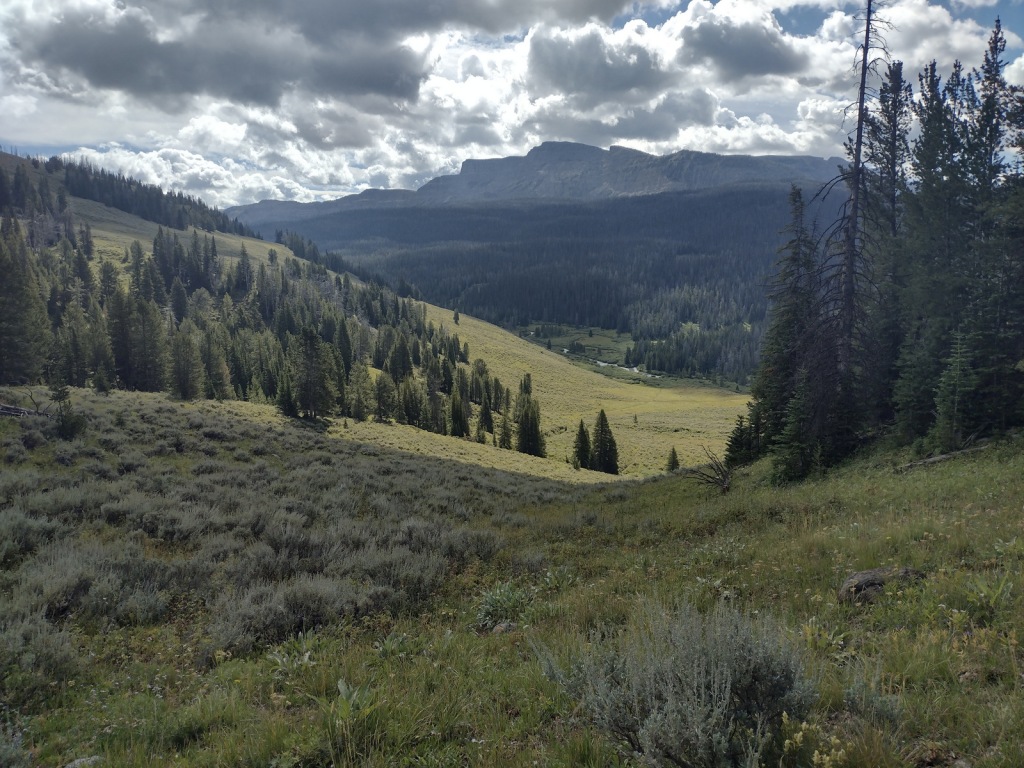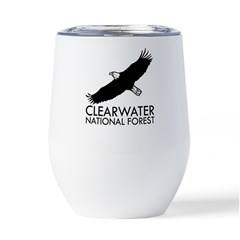Idaho Road Trip Itinerary
Idaho
52,891,597 acres (2.3% of U.S.)
Statehood 1890 (43rd of 50)
Capital: Boise
Population: 1,839,106 (38th of 50)
High Point: Borah Peak (12,662 feet)
Best time of year: Summer for mountain access and whitewater rafting
We recently published our guidebook 50 States of Great: Road Trip Guide to America, so we decided to start a new type of blog post where we create a travel itinerary for all 50 states, in addition to our usual National Forest and National Park entries. After starting with Kansas and Georgia, we decided to do a western state. We made an ambitious seven-day plan starting in the northern panhandle of Idaho, with plenty of options to extend the trip.
Day 1
Located right off Interstate 90, this white-painted, timber-frame church dates back to 1850 (making it the oldest building standing in the state). It was constructed by Coeur d’Alene Indians and Catholic missionaries without using nails and visitors can admire the wooden pegs used instead. There is a parking fee, plus separate admission to the museum.

St. Joe National Forest
Part of the larger Idaho Panhandle National Forest, this area encompasses the famous Route of the Hiawatha bicycling trail that follows the former Milwaukee Railroad grade, dropping 1,000 feet in 13 miles. Due to its 200-foot-tall trestles and a 1.6-mile-long unlit tunnel, a flashlight and helmet are required, as are permits available only at Lookout Pass Ski Area, which also offers equipment rentals and shuttles.

Optional stop at Coeur d’Alene National Forest (click here for our blog post)
Home to the 173-acre Settler’s Grove of Ancient Cedars, it is part of Idaho Panhandle National Forest that also contains 240-acre Hobo Cedar Grove Botanical Area and 20-acre Roosevelt Grove of Ancient Cedars (technically in neighboring Washington).

Day 2
Nez Perce National Historical Park (click here for our blog post)
An excellent film is shown at the main National Park Service visitor center in Spalding on the Nez Perce Indian Reservation. Nearby, check out interpretive signs at Heart of the Monster and historic buildings of Spalding.

Optional stop at Clearwater National Forest (click here for our blog post)
Highway 12 follows the beautiful Clearwater River providing access points for the dusty Lolo Motorway (a section of the Nez Perce National Historical Trail) and its many scenic overlooks. It is worth the short, flat hike to soak in Jerry Johnson Hot Springs.

Day 3
Hells Canyon National Recreation Area
Hells Canyon is considered the deepest in the nation when measured nearly 8,000 feet from river level to the top of 9,383-foot He Devil Mountain. We did a daytrip combination whitewater rafting and jet boat tour that was a blast with stops to see petroglyphs, McGafee Cabin, and Kirkwood Ranch, which can also be accessed via the Snake River National Recreation Trail in Payette National Forest.

Optional stop at Payette National Forest
Fast-flowing Goose Creek Falls is accessed on an incredibly steep 3.3-mile, out-and-back trail. Dispersed camping is allowed nearby on the shores of Brundage Reservoir, which has views to the north of the 8,292-foot-tall Black Tip. The picturesque town of McCall on Payette Lake is home to a Forest Service smokejumper base where tours are available by reservation.
Day 4
World Center for Birds of Prey in Boise
The headquarters of the Peregrine Fund is home to a California condor, red-tailed hawk, American kestrel, Swainson’s hawk, turkey vulture, western screech owl, and Harris’ hawk, in addition to exotic species like the harpy eagle and ornate hawk-eagle.

Warhawk Air Museum in Nampa
A different kind of “bird of prey” is on display in this hangar next to the small Nampa Airport, with military artifacts and aircraft, some of which still fly on special occasions.

Morley Nelson Snake River Birds of Prey National Conservation Area
South of Boise, this 484,873-acre area was established in 1993 because of its dense population of nesting raptors due to huge numbers of ground squirrels and other small burrowing mammals. It is run by the Bureau of Land Management, so dispersed camping is allowed.

Optional stop at Bruneau Dunes State Park
South of Interstate 84, this is a fun spot for kids with sandcastle building, swimming, camping, sandboarding (rentals available), and stargazing at night around the park’s observatory.

Day 5
Idaho City
This gold rush town was briefly the largest settlement in the Pacific Northwest with a population of 7,000. It subsequently burned down and was rebuilt four times in 1865, 1867, 1868, and 1871. Today it retains its Wild West charm with saloons, antique shops, and a couple of parlors where you can try delicious huckleberry ice cream.

Boise National Forest (click here for our blog post)
Follow the Ponderosa Pine Scenic Byway (Highway 21) 131 miles northeast through Idaho City and Lowman, where the road follows the South Fork of the Payette River past the campgrounds at Kirkham and Bonneville Hot Springs (reservations recommended) and up to 7,056-foot Banner Summit at the boundary with Challis National Forest (click here for our blog post).
Sawtooth National Recreation Area (click here for our blog post)
The jagged Sawtooth Mountains live up to their name, rising majestically above the Salmon River Valley. There are numerous campgrounds, including several on Redfish Lake, which is a gateway for backpackers into the beautiful Sawtooth Wilderness. The Sawtooth Scenic Byway runs 116 miles from Stanley south to Shoshone, through Galena Pass and the ski resort towns of Ketchum and Sun Valley.

Optional stop at Craters of the Moon National Monument and Preserve (click here for our blog post)
In the 1800s, this massive lava flow proved a major obstacle to avoid for immigrants on the Oregon Trail. Most of today’s highways follow in their tracks, going around and not through the 62-mile-long Great Rift. In 1969, the National Monument truly earned its lunar moniker by serving as a field school on volcanic geology for NASA Apollo astronauts. There are several short lava tubes found here, including Boy Scout Cave that retains ice well into the blazing hot summer months.

Day 6
Shoshone Falls
Twin Falls is home to this impressive cascade that drops 212 feet down the Snake River canyon. Its mist can form a brilliant rainbow, especially when the river is flowing strong in the spring before much of its water is diverted for agriculture.

Malad Gorge in Thousand Springs State Park
Situated directly beneath a bridge on Interstate 84, this is one of seven units in Thousand Springs State Park. Malad Gorge contains an awesome waterfall known as the Devil’s Washbowl and a beautiful volcanic rock canyon lined with natural springs.

City of Rocks National Reserve (click here for our blog post)
This collection of granite spires served as a rest stop along the California National Historic Trail. At the height of the gold rush in 1852, some 50,000 emigrants passed this site in a single year, many leaving their names painted in axle grease (still legible on Camp Rock and Register Rock). Today the National Reserve is a popular destination for rock climbers, and it also has 78 primitive campsites and 30 miles of hiking and equestrian trails.

Optional stop at Hagerman Fossil Beds National Monument (click here for our blog post)
Numerous mammal fossils from the Pliocene Epoch are on display at the National Park Service visitor center located on the main drag in the small town of Hagerman. Scenic overlooks of the Snake River and Oregon Trail are located further south, but there is no public access to the fossil beds.
Day 7
Minidoka National Historic Site (click here for our blog post)
Most of the 13,000 Japanese-Americans imprisoned in central Idaho were from Oregon, Alaska, and Washington (specifically Bainbridge Island where a memorial stands today). There is a new visitor center completed in 2020 with a large museum space and a small theater that shows an excellent film. A 1.6-mile interpretive trail loops past historic structures, including the Hermann House, root cellar, baseball field, barracks, and mess hall.

Museum of Clean in Pocatello
Located in a six-story building in downtown Pocatello, the museum offers more than one mile of displays, many of them light-hearted and downright hilarious (especially if you like puns). It was established by Don Aslett who started a janitorial services company while studying at nearby Idaho State University. The museum has a reasonable admission fee, and it is easy to spend two hours or more perusing the 10,000 artifacts and pieces of artwork inside.

Idaho Potato Museum in Blackfoot
A 15-foot-long model spud sits out front, providing an excellent photo opportunity. The museum has a collection of exhibits on cultivating the state’s principal crop and also boasts the world’s largest potato chip.

Optional stop at Caribou National Forest (click here for our blog post)
Even though the signs still read Cache National Forest, Minnetonka Cave offers one of the few developed cave tours offered by the U.S. Forest Service. In the 1930s, 444 stairs were installed to allow large groups to visit, and guides make multiple stops on this steep, out-and-back tour to allow you to catch your breath at this high elevation.

Day 8+ optional swing through eastern Idaho
Targhee National Forest
Mesa Falls Scenic Byway provides overlooks of both the 114-foot Upper Falls and 65-foot Lower Falls on the Henrys Fork of the Snake River. Palisades National Recreation Trail may be the most popular trail in Idaho as it leads to two beautiful mountain lakes located at 5,700 and 6,750 feet in elevation.

Salmon National Forest
Salmon National Forest includes a significant section of the 2.4-million-acre Frank Church-River of No Return Wilderness (the second largest Wilderness in the contiguous U.S.). Many multi-night rafting trips on the Salmon National Wild and Scenic River begin around the small town of North Fork. This upper 46-mile segment of the river is designated Recreational, so it only requires a self-issued permit. Those wishing to raft the 79-mile section west of Corn Creek Campground must enter a lottery, but out-of-state travelers typically go with a guide.
Land of the Yankee Fork State Park
An Interpretive Center in Challis celebrates the mining history of this region with audiovisual programs and gold panning stations making this a great place to bring children. The State Park also includes the Challis Bison Kill Site where animals were stampeded off a cliff by American Indians.

Challis National Forest (click here for our blog post)
It is an all-day affair to summit Borah Peak, the highest point in Idaho, typically starting before sunrise to avoid afternoon thunderstorms.

Learn more about Idaho’s Most Scenic Drive, Wonderful Waterfall, Top State Park, and other categories in our new travel guidebook 50 States of Great: Road Trip Guide to America.



























































































